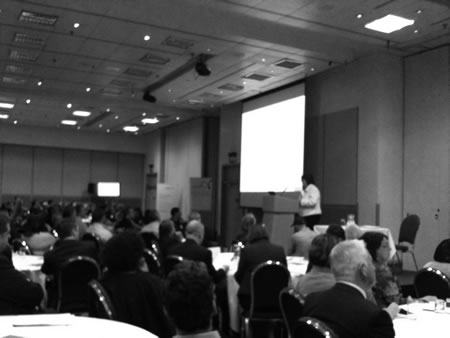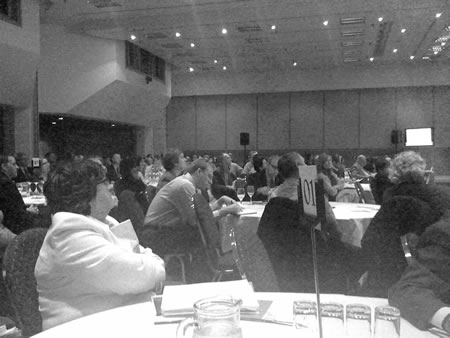At the AoC Conference I was part of a presentation that looked at emerging technologies and how FE Colleges need to be preparing for them. As well as myself speaking for the first part of the presentation, Donald Taylor, did the second half.
There then followed a workshop session where the delegates looked at the barriers and opportunities that FE Colleges would face with these emerging technologies.
Here are my notes and references, though they only cover my slides.
Future
So what does the future hold?
VR Glasses
Do you worry about costs?
Do you worry about breakages and theft?
Are your staff resistant or sceptical to technology
Well you’re not alone and concerns and scepticism about new technology is not new.
Lets go back 300 years….
Emerging technologies
Impact
What new technologies will be having an impact on teaching and learning over the next five to ten years?
Potential
How should colleges prepare and utilise the potential that these technologies will bring?
Preparation
We need to prepare and so lets see what is on the horizon….
Electronic Books
Who here has a Kindle or reads books on their iPad?
Amazon have said they sold more e-books than paperback books in the last quarter of 2010. They have sold millions of Kindles.
Apple sold 15 million iPads then they released the iPad 2.
There are numerous academic e-book platforms and collections, including the free JISC Collections e-book collection of 3000 books.
We’re using that a lot, as are Oldham Sixth Form College who last month accessed the collection and they viewed 50,561 pages. We did 7,882 pages…
Mobiles
So when was the first mobile phone call?
1946
When was the first handheld mobile phone call?
1973
Mobile phones are not a new technology. However the phone as a mobile computer, the smartphone, though about ten years old now, will dominate the phone market.
National Star College, used 3G phones with GPS to enable learners to access information, guidance and content to support them for independent living. The phones would tell the learners how to catch a bus, where to catch the bus, when to get off, how to get to their workplace.
Augmented Reality
…is the application of a digital information layer over the real world. Hold up your phone to a building and get information on its history and current use. Hold up to a college and see what courses that organisation offers. In an engineering workshop, hold your camerphone up to a piece of equipment and overlaid will be information, on what it is, what it can do and relevant health and safety information.
QR Codes are another way to add digital information to a physical space, at Gloucestershire College, we use QR Codes in the library on the shelves to provide easy and curriculum relevant access to online resources to learners.
Game-based Learning
Casual and mobile gaming is really big now in the UK. From the Nintendo Wii , the DS to the iPhone and iPad, as well as the Playstation and xBox. Gaming is huge and lots of different people do it.
When we talk about learners having a short attention span, can’t sit still for ten minutes in a lesson, how is it these same learners can play World of Warcraft for four hours…
Using games for learning is not new, as an old economics teacher I use to use paper based business games a lot. However video games now offer so much more and there are lots of ways that gaming can be used to enhance and enrich learning.
Many colleges, including my own, have been using Brain Training on the Nintendo DS to support the teaching of numeracy and encourage learners to enjoy maths.
Gesture-based Computing
The iPad is all about gestures. Microsoft Kinect allows you to play games without needing to use a controller. It won’t be long before we control our devices by waving our hands about!
Henshaw College who were already using the Nintendo Wii, are now using Microsoft Kinect to enable their blind and visually impaired learners to interact with a computer.
University of Portsmouth have already built an audience response system, MARS Motion Based Audience Response system, that can anaylse the hand interactions of the audience for answering questions without the need for the audience to use clickers or voting units.
Learning Analytics
You probably already know a lot about your learners, colleges gather huge amounts of data about each and every learner, about them, their progress, their success and their failure. The question is are you making use of that data to make business decisions? Are you analysing learners on entry, during their course and where they go, in order to make decisions about which courses you are running and importantly which courses you should close.
Learning analytics is the measurement, collection, analysis and reporting of data about learners and their contexts, for purposes of understanding and optimising learning and the environments in which it occurs.
IBM are able now to sell you a product that does this all for you. Making sure the right learners get on the right course and achieve success.
4G
3G already offers fast wireless speeds, the future though will be 4G which will allow learners to have download speeds in excess of 20 Mbps, or even faster. This means that learners will be able to stream video content, access a range of media using mobile devices where and when they want to.
Of course 4G isn ‘t yet available, however Grimsby Institute of Further and Higher Education have demonstrated the potential of 3G technologies, by putting 3G wireless routers in their coaches, so that learners can access the internet, the VLE whilst on the bus journey in. Making use of “dead time” for learning.
Connected Televisions
80% of televisions sold today can be connected to the internet, they can be used to access content and resources. Whether they are actually connected is a different question. However popularity of services such as YouTube, BBC iPlayer, 4OD and other content delivery systems, demonstrates that this could be a real way to deliver learning in the home.
The College of West Anglia has developed Springboard TV to create and deliver video content to their learners. Connected TVs will allow learners to access this content from the comfort of the sofa is going to enhance and enrich the learning process.
The key though is are we ready as organisations to make this transition to take advantage that these new technologies offer?
Emerging Practice
It is not just a matter of the technology changing, we also need to change our practice and how we do things to realise the potential that emerging technologies will bring to our colleges.
Social Learning
The internet and networking, means that learners can learn wherever they want to? Of curse they have always done this, what the connectivity means is that they can access a range of different content, communicate and collaborate. Individual learning, becomes social, this means we need to rethink about the social spaces we have in our institutions and how they need to change to support and promote learning.
Blurring informal and formal learning
In the past (and now) students have come to expect to learn formally in formal learning spaces. However new technologies mean that learners can “attend” college without actually being physically at college through remote delivery and webinar technologies. We are blurring the demarcation between informal and formal learning.
Changing Culture
As a result colleges need to change their traditional cultures of resistance and sceptism and embrace a new culture…
Innovation
One that encourages innovation and new ways of working… A culture that sees new technologies as an opportunity…
Experimentation
A culture that rewards experimentation and innovation and encourages learners and practitioners to utilise new technologies as part of their joint learning journey.
Future
There are other technologies as well: fibre broadband, voice recognition, voice commands, cloud computing to name a few. New ways of working, studying, all these will have an impact.
The future is coming, it always has and it always will, are you ready and will you always be ready for the future?
References
Martin Bean, Keynote at ALT-C 2009
2011 Horizon Report from Educause
Connect to Succeed Grimsby Institute of Further and Higher Education
QR Codes in the Library
Springboard TV
MARS
Student Analytics for Success








